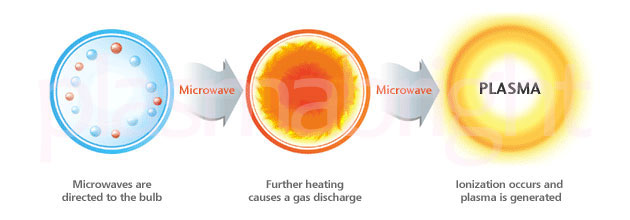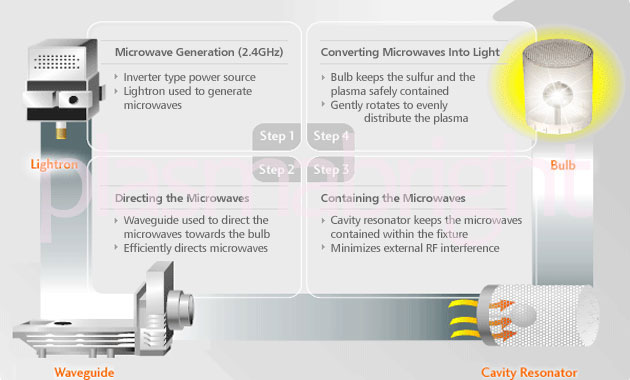How Does Plasma Lighting Work?
Plasma lamps consist of four primary components. First is the lightron, an advanced version of the magnetron similar to the ones inside a home microwave oven. Combined with our prowess in manufacturing microwave ovens, we have made design enhancements to produce a lightron capable of operating for long life.
The second component is a waveguide. It is designed to guide the microwaves generated by the lightron and direct it over to the cavity resonator where the magic takes place.
The cavity resonator is the third component. It is a wire mesh housing that contains the bulb and restricts the microwaves from escaping from the lamp housing. It also provides protection to the bulb itself.
Lastly, we have the bulb assembly. The bulb is a golf ball sized quartz sphere containing several milligrams of sulfur at the end of a thin glass rod. The microwaves generated from the lightron is guided towards the bulb and excites the bulb to generate a brightly glowing plasma which generates the light you see from the plasma lamp. The bulb is rotated at a constant speed to evenly distribute the plasma and light.
Plasma lamps can reach full brightness in under a minute, and it can be restarted within 5 minutes after a power cut. This compares to a restrike time of 15-20 minutes with conventional metal halide bulbs.




